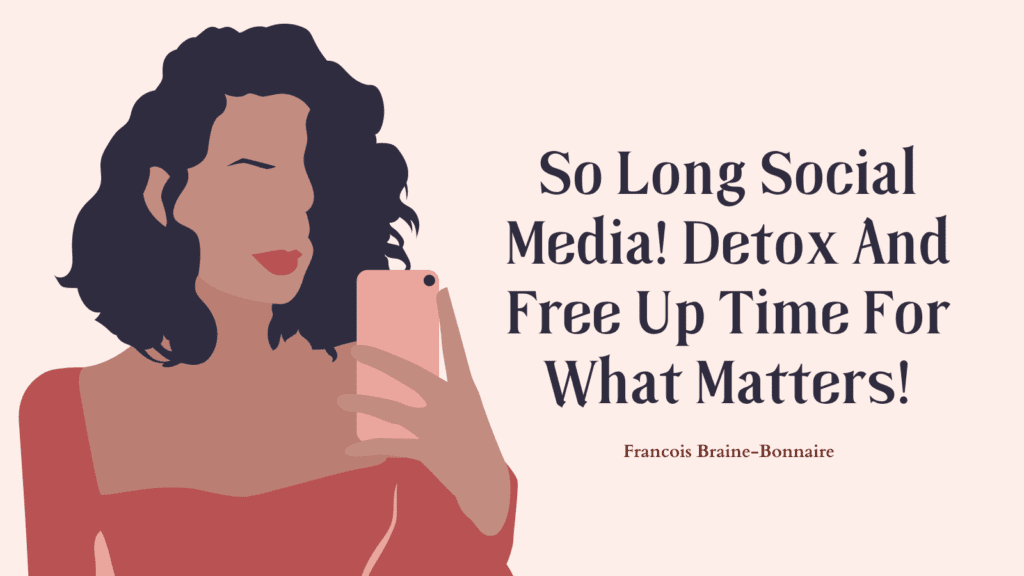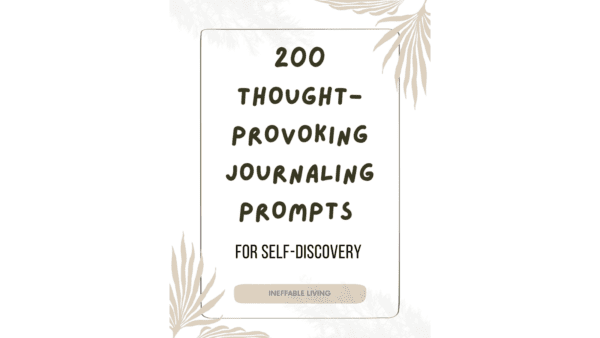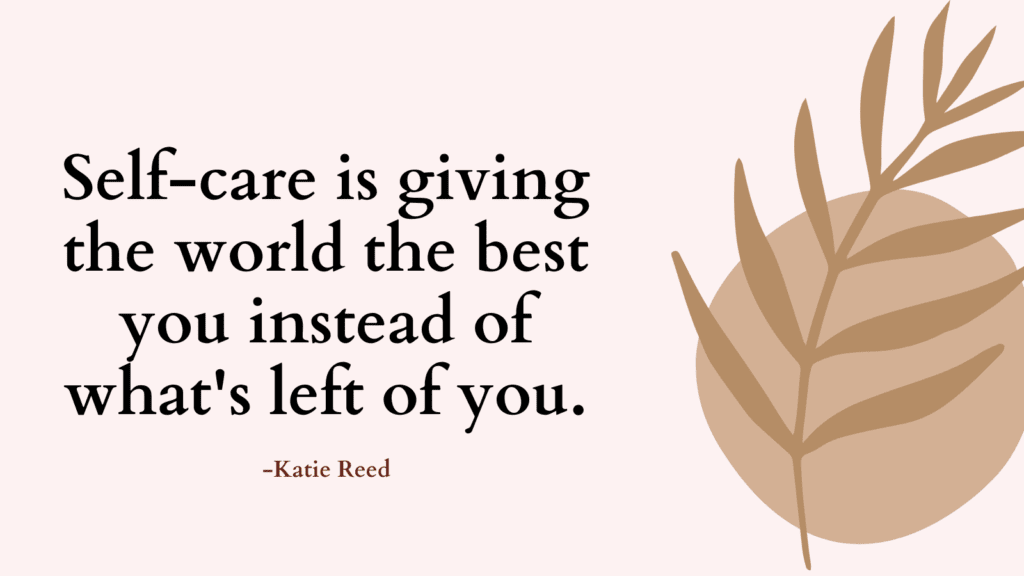This post contains “Am I Addicted To My Phone Quiz” along with helpful tips to help you overcome technology addiction.
We’ve come to depend greatly on the internet and digital devices.
While technology can improve our lives, it can also become problematic if used poorly or thoughtlessly.
Am I Addicted To My Phone Quiz
Technology addiction can be hard to recognize if you don’t know what to look for.
While the symptoms of addiction vary depending on the device you’re addicted to, there are many signs of technology addiction that are similar across the board.
Results
#1. Are you unable to abstain from a using your phone or control how much time you spend using your phone?
#2. Do you experience cravings and urges to use your phone?
#3. Are you often preoccupied with thinking about using your phone?
#4. Are you experiencing unwanted mental health symptoms such as depression, anxiety, stress or irritability as a result of technology addiction?
#5. Do you often use your phone to experience gratification or induce pleasure?
#6. Do you often use your phone in dangerous situations such as while driving a car or walking across a city street?
#7. Do you often lie about or hide digital usage from family or friends as a result of shame?
#8. Are you neglecting important life areas such as work, school or relationships as a result of technology addiction?
#9. Have you lost interest in social and leisure activities that you used to enjoy as a result of technology addiction?
#10. Do you continue to use your phone despite its negative consequences on your life?
We will not sell your information. All results are kept confidential.
This quiz is for informational purposes only. It is not meant as a diagnostic or assessment tool.
Results:
The questions above represent common signs of technology addiction. If you answered yes to most of these questions, then you might be addicted to your phone.

How Do We Become Addicted?
All addictions are based on the same fundamental principle: the brain’s expectation of the reward that engaging in a particular activity will produce.
The addict might not be aware of this reward and it may even seem counterintuitive since it poses potential harm. But the brain interprets it as a positive experience.
When it comes to technology addiction, studies show that the act of checking texts and social media, for example, stimulates the release of dopamine, which in turn keeps you hooked, wanting to experience it again and again.
Examples of technology addiction include:
- video games
- social media
- texting
- online shopping
- online gambling
- online auctions
- pornography (*)
10 Factors That Increase Your Susceptibility to Technology Addiction
Becoming aware of the factors that contribute to the development and persistence of technology addiction can help you avoid them and reduce your dependency.
1. Mental health
Studies show that individuals suffering from depression, anxiety, bipolar disorder, and schizophrenia are more likely to develop addictions than individuals not suffering from these conditions. (*)
If you suffer from mental illness, consider seeking therapy.
2. Negative Self-Image and Low Self-Esteem
If you suffer from low self-esteem and have a negative self-image, you’ll be more likely to isolate yourself from others, which leads to using addictions to escape the negative thoughts and seek validation.
While an addiction may offer momentary relief, it only serves to reinforce feelings of low self-worth and shame.
This is why changing the way you see and think of yourself is also important when recovering from an addiction.
Related: Raising low self-esteem: 18 Ways to Build High Self-Esteem
3. Feelings of Loneliness
When we feel separated and disconnected from others, we feel empty inside.
That can lead to compulsive behavior and other mental illnesses that contribute to the onset of addiction.
4. Ease Of Access
What makes technology addiction especially challenging to break is the availability of the gadgets. They’re inescapable. Nearly everyone has a smartphone.
Using gadgets becomes a habit and each time you give in to the temptation you feed the addiction.
5. Anonymity
The anonymity blogs, forums, and social media offer has enabled people to express their ideas safely.
It’s unsurprising that people would say things online they would never say in the physical presence of others.
Anonymity also encourages voyeurism or stalking. That can easily become addictive.
6. Fear of Missing Out
The fear of missing out is probably the greatest factor in technology addiction.
People checks their social media feeds and texts and read the latest news headlines because they don’t want to miss something.
7. Techniques Employed by The Tech Industry
Tech industry employs techniques and practices to encourage compulsive behavior in consumers.
One practice is called “intermittent reinforcement.”
This practice uses sporadic rewards to reinforce a particular behavior.
For example, each time you log onto Facebook, you are hoping to discover something new and interesting, such as a new photo posted or a funny video shared by a friend. But there is no guarantee you’ll find new, interesting content every time you visit Facebook.
That’s “intermittent reinforcement” at work.
According to psychologist and behaviorist B.F. Skinner, who first coined the term, by keeping you engaged with rewards delivered at irregular intervals these industries ensures you’ll keep coming back, hoping the replicate the experience.
Disconnect To Reconnect: Digital Detox Challenge
8 Things to Do Before Disconnecting
#1. Challenge Your Limiting Beliefs
1. “I need my gadgets to get things done every day.”
While technology does make our lives easier, the intention behind doing digital detox is to re-balance the role of technology in your life by keeping what you genuinely need and reduce what is ultimately a waste of your time.
2. “I need my phone to check in with people in my life.”
Technology has definitely helped us meet and connect with others.
However, most of our technology use has little to do with connecting with other people. A digital detox can help you re-prioritize your time spent on your phone.
You may want to let people know that you’re going offline for a digital detox so they will know what to expect around your availability.
3. “I have to know the day’s headlines or else I’m afraid I’ll miss out on something important.”
It’s true that going offline would mean that you will “miss” some things. You won’t see every post, photo, or trending headline in the endless newsfeed stream.
But ask yourself, what are you missing that really matters?
Was there a post or an update that was so important it changed your life? Or does it seem like you wasted so much time with nothing to show for it?
A digital detox can help you re-prioritizing your time and discover what truly matters to you.
#2. Schedule a Digital Detox
Determine how long your digital detox will last and when it’s best to schedule it.
When you are addicted to technology, deciding to unplug for an entire week, for example, might not be realistic.
Start with a 24h digital detox and schedule a day on your calendar to prompt your brain to prepare for it. Most people find the weekends to be the best option.
#3. Remove Social Media Apps From Your Phone
Even when you set your phone aside, it can be difficult to resist the cravings you may experience and reach out to your phone.
Getting rid of your social media apps will help make it less tempting to onto Facebook, Instagram, Twitter, and Pinterest.
Deleting these apps will also eliminate their respective push notifications, especially if you needed to use your phone in the event of an emergency, to make sure that a loved one is okay, for example.
You may choose to reinstall the apps after completing your digital detox. You may also choose to turn off notifications from these apps. Or you may also choose not to reinstall them after all.
#4. Create An Out-of-Office Email Message
When you’re usually reachable via email, your friends, family members, and coworkers will notice that you’re not responding to their emails as quickly as they have come to expect and wonder where you are during your detox.
Creating an out-of-office email message that will be sent out automatically and immediately each time you receive an email, can help.
You may choose to keep the message simple and brief or choose a humorous one.
For example,
“Thank you for your email. I’ll be out of the office from March 7th through March 9th and have limited access to my phone and computer. I’ll reply when I return back to my office.”
#5. Prepare Important Resources Beforehand
The internet has come to play a prominent role in our daily experiences. This dependency can sabotage your digital detox.
Before you unplug, make sure you have the information you need.
If you’re going to need a recipe, print it or write it down. If you’re planning to travel to a destination for which you’ll need driving directions, write down the address.
If you’re using your phone as an alarm, buy an alarm clock to use during your detox.
#6. Let Your Friends and Family Know About Your Digital Detox
Telling the people in your life that you’re planning to do a digital detox will help reset their expectations around your availability but can also create accountability.
Behavioral psychologists suggest that telling others about our plans makes us more likely to follow through on them.
#7. Create a List of Activities to Do While You’re Unplugged
It’s important to give yourself alternative activities to focus your attention on and help you resist the urge to retrieve your devices.
Create a list of activities to do while you’re unplugged. These may include tasks you’ve been putting off, or interests you want to pursue.
You may also choose to spend the day outdoors away from any temptation to use your devices, such as planning a lunch date, or exercising outdoors.
Don’t wait until you’re without your devices to brainstorm activities. Make sure you have your list ready beforehand.
LIST OF PLEASURABLE ACTIVITIES
#8. Anticipate Potential Challenges
It’s important to anticipate and address any potential obstacles.
If you’re addicted to your phone, you may experience an effect known as phantom phone syndrome. This is the perception that your phone is vibrating or ringing.
Acknowledging that this may be one challenge you may encounter while unplugged can help you be more accepting and less frustrated.
Disconnect: Completing Your Digital Detox
#1. Out of Sight, Out of Mind
Turning off the internet on your devices or turning your devices off is not enough. Willpower alone won’t be enough to help you resist the temptations.
When you’re addicted to something, your mind will do everything to get you to act on your compulsions.
You will begin to rationalize taking a look at your phone or your social media, then soon enough you find yourself making defeatist thoughts, such as “If I’m going to fail I might as well take a look.”
You need to put them somewhere out of sight. Place them at the back of your closet, or give them to your spouse.
#2. Disconnect Your Office Computer From The Internet
The weekend is ideal for a digital detox because you won’t have to worry about using your devices for tasks related to your job.
But if you’re doing your digital detox on a working day or you have work to finish on a weekend, at least disconnect from the internet.
Get as much done as possible without internet access. If you need to send email, reconnect then sever the connection again.
#3. Wear a Watch
One of the main reasons why people check their phones is to check the time. But usually lead us to check out other time-wasting activities, such as checking out the latest posts on social medias.
To avoid any temptations, start wearing a watch during your digital detox.
If you can’t wear a watch because it will clash with your outfit or for any other reason, consider removing the wristband and putting the digital display in your pocket or purse.
#4. Invest In A Paper Notebook
Get a paper notebook and use it as your personal journal during your digital detox and maybe on a daily basis.
Journaling will help you stay away from your gadgets but also will help you release any pent-up frustration.
You may even use journaling to understand your technology dependence better, you may ask yourself questions like:
- What are my fears and worried around cutting back of my technology use?
- How are my face-to-face relations with loved ones?
#5. Expect Withdrawal
Some people experience physical and emotional withdrawal when they abstain from their mood-changer, whether it was chemical or not.
These aftereffects include:
- irritability,
- mood swings,
- low energy,
- short attention span,
- clouded thinking,
- an inability to experience pleasure,
- and extreme sensitivity to stress.
They usually occur within a few days of abstinence and disappear within two weeks.
Being aware of these aftereffects can help you feel less discouraged.
Physical exercise and proper nutrition are proven to reduce withdrawal symptoms.
Vitamins (B complex and C in particular) and amino acids (tyrosine, phenylalanine, and tryptophan) help facilitate the replacement of dopamine and other neurotransmitters that are depleted by certain drugs.
Reconnect With Yourself
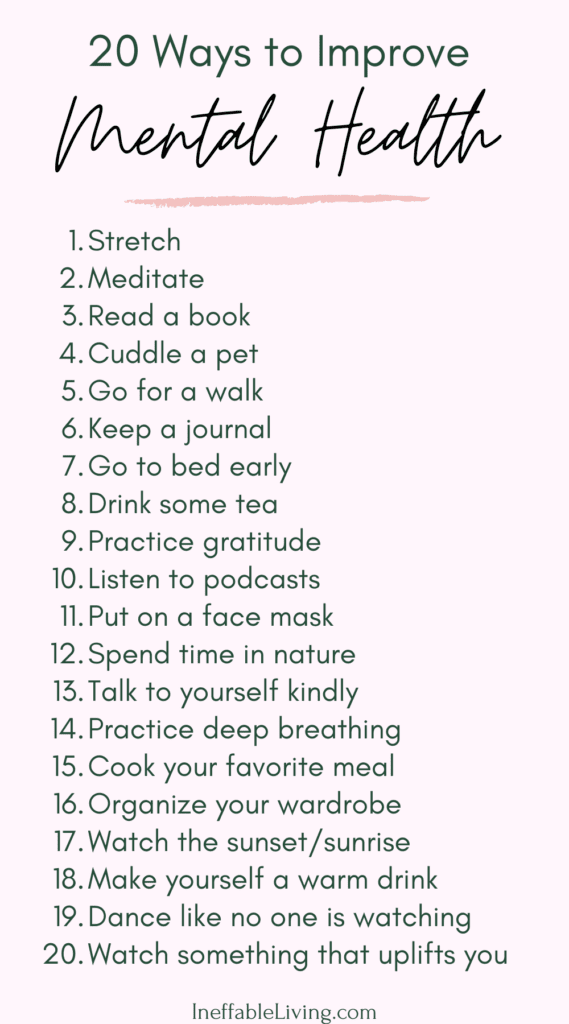
Why Is It Important To Reconnect With Yourself?
1. Self-Awareness Is Key To Mental Health
Without self-awareness, you’ll find yourself depending on other people, events, and objects to define yourself.
You end up defining yourself in terms of your relationships with others and struggling to deal with your difficult emotions.
As a result, your identity becomes vulnerable to self-deprecation, anxiety, and unhappiness.
2. It Is Not A Selfish Endeavor
Improving your mental health and focusing on your personal growth is the opposite of selfish.
You can only contribute the best of yourself to society when you begin to understand yourself and find inner peace.
You can accomplish this is by sitting down with yourself like you would do with a friend, and ask: how am I feeling right now?
Once you’ve identified each separate feeling, try to identify which event or thought might have caused these emotions.
What Is Your Inner Self?
The inner self, also referred to as the “true self,” is a person’s internal identity.
This identity is distinct from identities defined by external factors and is closely linked to the person’s values, beliefs, and goals.
The main way to tune into the body and align with the inner self is to raise your awareness.
How to Reconnect With Yourself?
#1. Learn to Quiet Your Mind and Listen Within
There are many ways to help you get in touch with your inner self, including deep listening, relaxed breathing, meditation, and prayers.
1. Deep Listening And Relaxed Breathing
One exercise to practice deep listening is to listen to a favorite piece of calming, classical music with your eyes closed. Try to identify the particular instruments.
As you lose yourself in the music, don’t be surprised if you start having inspiring thoughts and subtle pieces of information leap to mind.
When this happens, graciously view it as an introduction to your inner self and deepest desires.
Relaxed breathing can make you receptive to your deeper awareness.
You can also combine deep listening and relaxed breathing.
2. Meditation
To meditate, you don’t have to sit upright and start chanting “Om”.
You can meditate while enjoying a walk, cooking, cleaning, gardening, etc.
The key to entering into a meditative state is to stop thinking about the future and the past and focus on your breathing as you enjoy the world around you – practicing giving your full, undivided attention to what you’re doing at the moment.
3. Praying
Praying isn’t just about pouring your heart out. You need to also remember to thank your Creator for all of the blessings in your life as well.
Prayers of gratitude help you raise your awareness of all of the love and support that are already present in your life.
#2. Shift Your Attention
In order to raise your awareness, you need to shift your attention one hundred and eighty degrees and look inside your internal landscape.
When you become aware, moment by moment, of what you are feeling and the decisions you are making, you face the most unhealthy parts of yourself—the parts that blame, criticize, judge, resent, envy, and hate others and yourself.
When you do that, you learn to see your inner experiences as primary, and your external circumstances as secondary.
You begin to understand that getting a new partner, a larger home, or a better car are all ways of pursuing external power, but that doesn’t make you feel more whole and secure.
Instead, you shift your focus to uncover, acknowledge, and change the causes of insecurity.
Practical Exercise 1 – Change Your Intention
Spend some quiet time. Consider the things in your life, what you eat, and what you do throughout the day.
Ask yourself, “Do I do this for survival? To feel more secure? To feel better about myself? To feel better than others?”
For every Yes, ask yourself, “How could I see the things that I do or have differently?”
For instance, instead of exercising to make yourself feel good, or to feel more secure, choose to exercise with the intention of taking care of your body.
The act is the same, but the quality of the satisfaction you derive from it will be different.
Instead of having a partner to feel better about yourself, or safer, choose to be with them to enjoy a true partnership.
Make it a habit to ask yourself Before doing anything, “What is my intention for doing this?”
When you become your own source of worthiness, you will still eat, exercise, buy clothes, and get into relationships. The difference is that you will not do these things to control or impress others.
You will live true to yourself, without fear.
#3. Feed Your Inner Self
It’s not hard to understand how one can lose touch with his deepest desires.
Our culture encourages people from childhood to put others before themselves and to call any personal interest or self-care activity “selfish”.
As a result, most people don’t know how to feed their inner selves.
1. Discovering What Feeds Your Inner Self
The following are some ideas:
Fun/pleasure
- Sport (watching or taking part)
- Enjoying music/attending shows and concerts
- Watching a movie/going to the cinema
- Hobbies
- Reading books, magazines
- Listening to podcasts
- Practicing relaxation techniques/yoga/meditation
Achievements
- Learning something new/class
- Planning and cooking regular meals
- DIY projects
Spending time with people you like
- Seeing people you like
- Phoning or texting friends
- Going to church, mosque, temple or synagogue
- Going to a clubs and support groups
Routine
- Spending time with your pets (e.g. walking the dog)
- Looking after the garden
Write down your answer then ask yourself, “Why am I not doing more of these things?”
If you feel disconnected from your inner self, start by paying close attention to your day-to-day life.
Recognize the moments when you feel most engaged and peacefully involved. What were you doing? These moments are when your inner self is inspired.
Identify the activities that leave you with a sense of contentment and satisfaction, these activities are in line with your deepest desires, and doing more of them will help you access your inner self.
Related: Take Care of Yourself: (26 Simple Self-Care Practices for a Healthy Mind, Body & Soul)
2. “If I weren’t afraid, I’d . . .”
You can also try to take a few minutes every week and fill in the following: “If I weren’t afraid, I’d . . .”
For example, “If I weren’t afraid, I’d take a day off from work and relax.” “If I weren’t afraid, I’d call my mother and tell her I love her.”
By doing this, you raise your awareness and allow your inner self to speak in a free and uncensored manner. After a few sessions, you’ll discover what nurtures and feeds your inner self.
3. Freeing Yourself From Guilt
Dome people know what their inner self wants, but feel guilty to allow themselves such indulgence.
For instance, a busy mother who loves nature might deny herself a walk in the park because she feels that other obligations in her life are more important.
Feeding your inner self doesn’t have to mean that you’re going to neglect other obligations in your life. A guilt-free Half-an-hour walk in the park every now and then can be all you need.
A little can go a long way when it comes to being sensitive and responsive to your inner self.
The inner peace you find after feeding your inner self will help you perform more effectively in other areas of your life.
Practical Exercise 2 – Spend Time With Yourself
Set a free period of, 15 to 20 minutes every week where you answer to no one but yourself.
During this time, allow yourself to do something you enjoy, such as spending time in the garden, or simply daydreaming—guilt-free.
Gradually add more time to that period and move up from once a week to twice a week or more.
You may have to let others, like family members and especially children, know that this is an important time that needs to be respected.
Conclusion
An addiction develops because of psychological needs.
Addictions usually serve a function: they fulfill emotional voids, and/or numb difficult emotions and painful traumas.
Overcoming addictions will require addressing these underlying issues and cultivating a good relationship with yourself and with others.
Begin by taking a long, hard look at your relationships with family and friends. Let go of negative or toxic ones, and work on improving supportive ones.
It’s important to keep in mind that breaking your addiction requires the removal of your gadgets, at least temporarily.
Cutting off your access to technology is bound to trigger withdrawal symptoms. It’s important to resist the temptation of checking your digital gadgets.
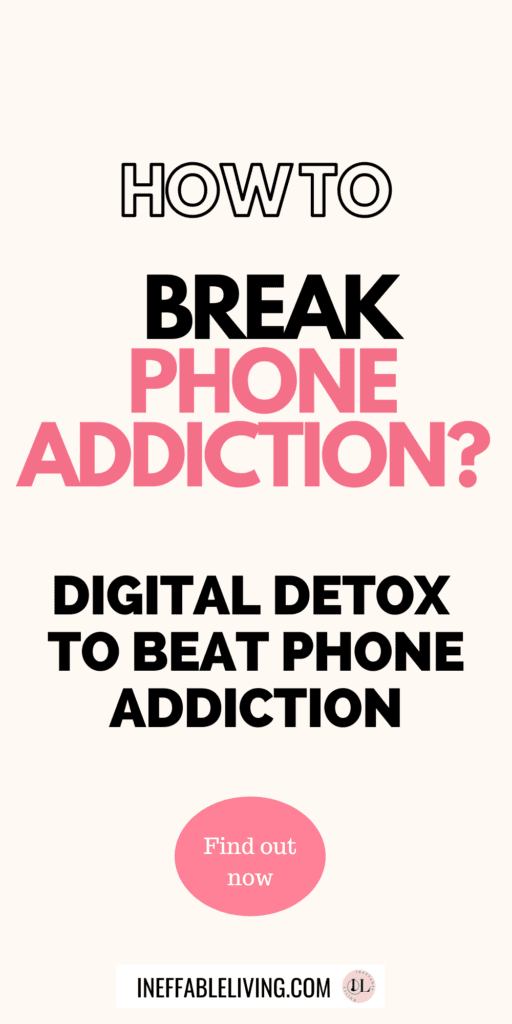
References
- Portions of this article were adapted from the book Digital Detox, © 2018 by Damon Zahariades. All rights reserved.
- Portions of this article were adapted from the book Conscious Digital Detox, © 2016 by Molly McCord. All rights reserved.
- https://www.ncbi.nlm.nih.gov/pmc/articles/PMC3480687/
- https://www.ncbi.nlm.nih.gov/pmc/articles/PMC6198588/
- https://web.stanford.edu/~gentzkow/research/DigitalAddiction.pdf
- https://www.frontiersin.org/articles/10.3389/fpsyg.2020.571638/full
- https://www.bournemouth.ac.uk/research/projects/digital-addiction-research
- https://bmcpsychology.biomedcentral.com/articles/10.1186/s40359-020-00508-z
- https://www.sciencedirect.com/science/article/pii/S0160791X21003079
- https://www.verywellmind.com/pandemic-caused-increase-in-internet-addiction-study-finds-5213760
- https://www.psycom.net/iadcriteria.html
